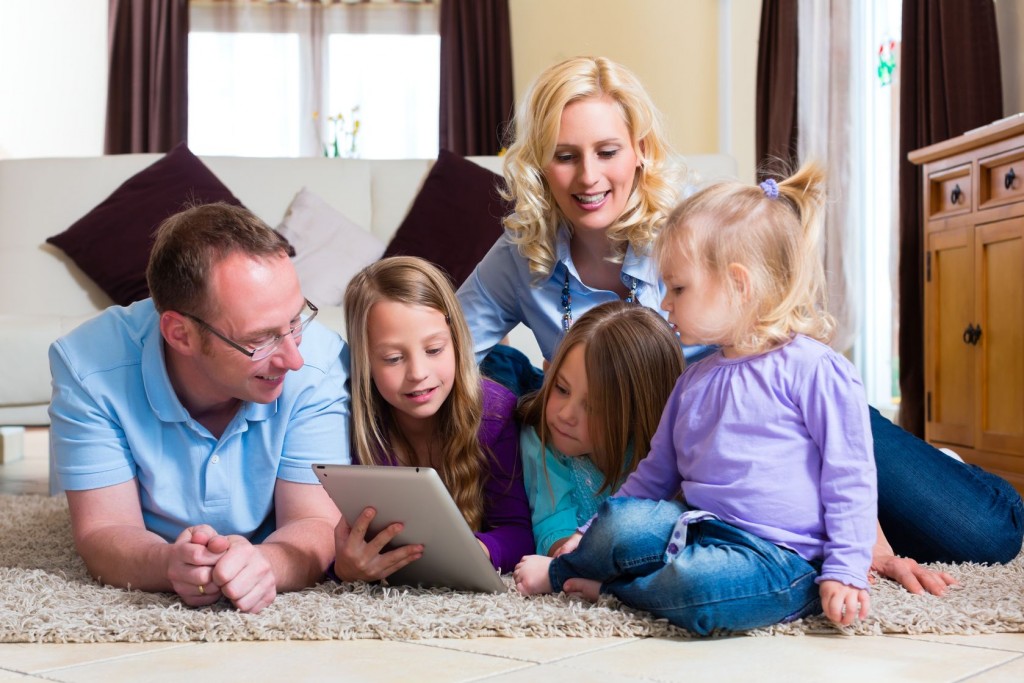This isn’t going to be a screen-bashing post. I do admit to a love-hate relationship with technology. I get giddy about any new Apple product. I spend hours a day before a screen. I also get really agitated at times from digital overload and frustrated when things don’t work right.
But it’s our reality—we live in an increasingly digital world. There are pros and cons to our screens. You shouldn’t throw the baby out with the bath water.
Yet, screen time is an issue that warrants some thought and intentionality. If you don’t establish some parameters, we will all become more bleary-eyed, stressed, and relationally deficient.
By screens, I’m talking about TVs, computers, smartphones, and tablets. Pretty much most of what we look at each day.
I don’t have to build a case as to how we’ve all been impacted by more screen time. It affects people of all ages.
How screen time affects kids is of particular concern, however, especially in the early, highly formative years. The American Academy of Pediatrics is in the process of updating their guidelines. While the jury is still out on the long term impact of screen time on kids, initial evidence indicates it’s better to err on the side of less rather than more.
The general consensus up until now that’s been supported by the AAP is minimal to no screen time for kids under two years of age. Older kids should be limited, directed, and supervised. (UPDATE: The American Academy of Pediatrics has created on online tool where you can create your own personalized Family Media Plan.)
Which brings us to the importance of establishing a family policy for screen time in your home.
It’s hard to say “no screen time.” A better option would be to decide…
For What, How Much, And When?
- Permission required. Every screen should be used only with parental permission. It’s a privilege, not a right. You can determine appropriate ages for giving more latitude. But getting permission first before the TV goes on, the video game gets fired up, etc. helps parents keep a pulse on what’s being used for what, how much, and when.
-
Parental controls, please! Almost every device today allows for parental control of content access. Use it. Inspect what you expect. Love your kids enough to make it impossible to stumble into harmful content.
-
Screens make poor babysitters. It’s easy to turn on the TV or hand a little one a device that occupies them—but don’t. Better to put a young one in a playpen and play with physical objects or sit in the high chair close to you so you can interact with him while you’re doing whatever.
-
Don’t justify screen time as educational. There’s no hard evidence that watching videos helps with learning languages, etc. for little children. If you want to use a screen like you would a book to teach shapes, colors, animals, etc., do it with them. Of course, online school curriculum isn’t a problem yet regular breaks should be scheduled away from the screen.
-
Minimize entertainment usage. Better to encourage entertainment that involves physical activity and personal interaction. Reading is an exception. The developmental benefits of reading whether on physical paper or digital page are equal—except before rest or bedtime. Reading a book before bed is great; however, the blue light from a screen within an hour of bedtime can mess with quality sleep.
-
Short bursts. Unless involved in a work or school project, try to keep screen time to short bursts. You can spend hours in mindless surfing the Web if you don’t set a limit.
-
Screen-free zones. Don’t let screens conflict with relational interaction with others. The family table for meals and bedrooms should be screen-free. Computers and TV’s are more easily monitored in family areas than bedrooms. Times dedicated to building relationships and memories together such a Family Nights or special time one-on-one with a child are better without screens. A good exception is FaceTime with relatives. Otherwise, spend more time talking and interacting with those you care about most.
-
Screens down. Eyes up. Develop the habit among all family members that when someone is wanting to talk with you, you turn off the screen or put it down and give your undivided attention. It shows respect and courtesy—always good—and the conscious act of turning away from the screen helps you be fully present in the moment.
Screens are great—in their proper place. You need to decide what is appropriate in your home. Discuss your policies and procedure options with your spouse. Call a family conference and discuss. Stress the benefits rather than just outlining a bunch of new rules. It may take a short while for everyone to appreciate the boundaries but it’s well worth it.
Question: How do you keep screen time in check in your family? Share your answer in the comments below.
